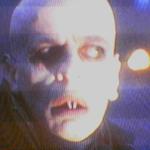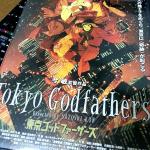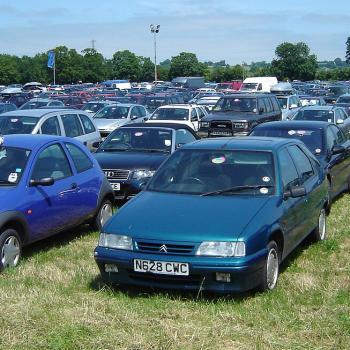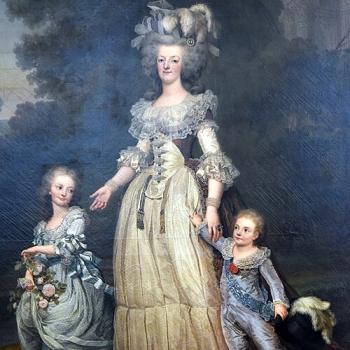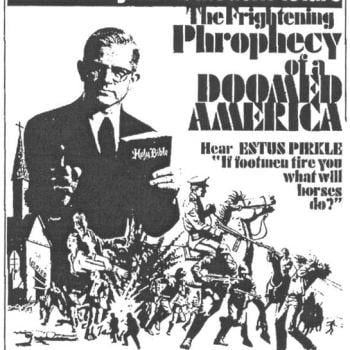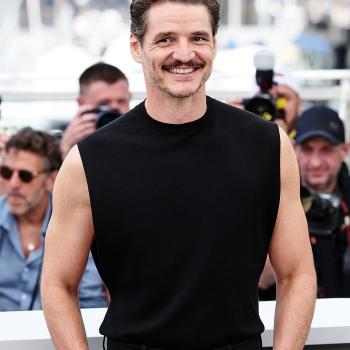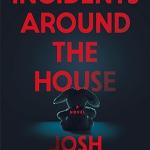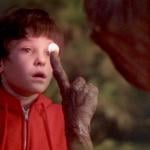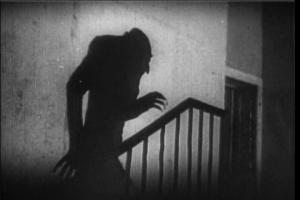
Source: Flickr user Insomnia Cured Here
License
Great expectations sour easily. And, no matter what John Crowe Ransom would have us believe, we encounter art in history and (most lamentably of all) in particular moods. When a cold waylays me, soup nourishes, but it doesn’t taste the same. When you’re depressed beyond human understanding, Terrence Malick’s The Tree of Life (2011) elicits nothing but caustic remarks and other vituperations (don’t ask). In a word, we, like, live in time and space, man.
What, then, do I make of Robert Eggers’ Nosferatu (2024), which I awaited with bated breath and a couple scramble-brained reviews featured on this very blog? Being a fan of the director’s prior work, I expected the best, watched four prior adaptations (Murnau, Browning, Herzog, and Coppola) like a dutiful pupil. Wisdom, be attentive. I was ready to learn something.
I’m not sure I really did. Strictly speaking, I liked the film. I found it (and I hate this word) “interesting.” I recognized how Eggers played with, enhanced, and inflected the tradition of Dracula cinema. But this enjoyment was entirely intellectual; indeed, both my wife and I fell asleep briefly while watching. It was, in a word, a real letdown.
Partially, I blame myself. Too much of the Count makes Chase a dull boy. I now know how Marvel fans must feel, seeing the same origin stories and plotlines played out, tinkered with, and retooled. The only trouble is that I didn’t enjoy it. Too much rich cake is still, well, rich cake. Even the little boy from Matilda (1996) passed out after facing the Trunchbull’s chocolatiest confection.
But is that all? I doubt it. Eggers opts to re-center the story round Lily-Rose Depp’s Ellen Hutter, to whom Count Orlok is supernaturally connected. Through her childhood affinity with the ghostly, she becomes marginal. She is sociable only once she meets Thomas Hutter (Nicholas Hoult) and marrying him. As Dracula fans will know, Thomas travels to Transylvania to get the Count’s signature to finalize his move to the fictional German city of Wisberg. Orlok thus can eliminate his rival and claim his supernatural bride.
The status of the Ellen character is ambiguous. In the original 1922 film, in the 1931 version, and in Herzog’s adaptation from 1979, there is no clear connection between the realtor’s wife and the vampire. The monster sees her neck in a cameo and decides to claim her as his own. Coppola’s steampunk wet dream from 1992 opts for the opposite. In his telling, Dracula is a tragic hero who just wants to go on Victorian movie dates with the reincarnation of the woman whose death drove him to curse God and take to the night.
Eggers splits the difference, though with a twist. His Ellen saves the world by embracing her inner connection to evil (the film asks explicitly if evil is inside us or a force working upon us from without). This decision to add just enough more detail to the skeletal narratives of the past yields mixed results. I love the addition of a vampire-staking scene in a village outside Orlok’s castle. I enjoyed the film’s fleshing out of the Harding family, whom the other versions inevitably grant little more than the shortest of shrifts. However, I was less sure what value there was in making Ellen the messiah or spending so much time with Orlok whispering in the night.
Indeed, I feel ambivalent about Bill Skarsgård’s Count Orlok. Eggers leaves him swaddled in shadow throughout, an exquisite way of communicating that he only comes out at night—why would anyone have ever seen his face clearly except to be bitten? But he’s cast as a true horror monster. A seductive one, one bent on sex, yes—but ultimately, he dwells in the realm of jump scares and nighttime fantasies. To my mind, he felt like a comic-book villain crossed with the Babadook. The final scenes try to reclaim some of the eroticism from Herzog and especially Coppola’s versions, but it just isn’t there, doesn’t play. Lots of thrusting and banging, ghostly sex if you will. But very little of the hypnotic power of Lugosi or the pathetic passion of Kinski.
Much of my frustration can be summed up in a rather innocuous detail: Orlok’s mustache. On the one hand, this humanizes him in a film otherwise hellbent on not humanizing Nosferatu. On the other, it differentiates the character and the performance, allows this version to stand apart from both of the existing traditions (the “German” and the “English,” let’s say). I’m told that the novel, which I regrettably have not read), gives the Count facial hair; it fits the whole Vlad Dracul thing.
But other than loyalty to the source material, does it do much? Does it make him scarier or more threatening or malevolent? No. But do I care? Do I find it offensive? Also, no. It just is—a baffling detail no doubt much pondered over and well-planned that amounts to something I don’t quite get. Pars pro toto.
It seems to me that Eggers wanted something more like a modern, fright-based horror film. But the scares just aren’t there.
The interior shots of the inn in Transylvania are among the finest I have seen in a modern film. But the would-be silent-movie tribute in blue and gray slathered over much of the rest of the work did little but leave me feeling drab and uninterested. Eggers composes his shots with mastery. The pacing is adequate (things drag a bit after the Count’s arrival in Wisberg) and certain new scenes, like when Friedrich Harding (Aaron Taylor-Johnson) kisses his wife’s corpse and plague-vomits onto her sarcophagus, are brilliant. Prof. von Franz (Willem Dafoe), the van Helsing character, offers the goofiness we have come to expect from that doctor of the hermetic arts. But does such goofiness belong here? Does it make sense with this Count Orlok?
I could go on and on. But who wants to hear that? I have to think long and hard about Eggers’ Nosferatu, a film equal parts gorgeous, confusing, drab, titillating, stomach-churning, boring, thoughtful, brilliant, and frustrating. I need to watch it again. But I don’t think I’ll do that soon. Maybe I’ll try the book. I’m done with vampire movies for a while.


